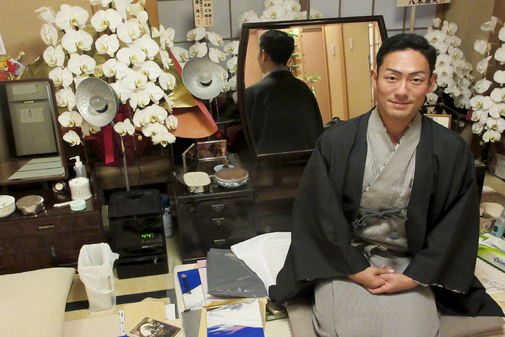Japan combines its identity in the past and future at the same time. It is visible with a walk through any of its cities, which blend ancestral traditions in a harmonious tapestry with a hypermodern society on horseback between the real and the virtual .
The Olympic Games were not going to be less. Even the name of the pet, Miraitowa, founds the concepts of eternity and future in Japanese. And less than six months after the competition, the country is polishing all its faces to show them in July to the world. To the modern face - a puzzle of skyscrapers and epileptic neons - new pieces have been added to host the Olympic facilities, in addition to robots to assist the public with the label of rigor and public transport to circumvent the 'mother of all marathons' : Tokyo's rush hour, which awaits a tide of tourists to line up with its 12 million citizens . A tougher task for the foreigner than for the Japanese, born with a mutation of efficiency in DNA that allows him to circumvent tails with the speed of an assembly line and the elegance of a symphony.
But Japan also wants to take advantage of the Games to show off its other face, ancestral, mysterious and eternal: the Olympic torch - which will start from Fukushima as a symbol of reconstruction after the 'tsunami' and the nuclear accident of 2011 - has been forged in the mold of cherry blossoms, which in spring explode turning the country into a gigantic impressionist painting. And the grand opening will be truffled with nods to kabuki , a theater that is carnival, dance and song, and poetry. And even a sense of humor that surprises the unbelieved Westerner.
In the middle of the sumptuous Ginza neighborhood, where shop windows laugh at the less lined yen pockets, stands the Kabukiza Theater, a must for Olympic tourism in Tokyo. In one of the dressing rooms, actor Kankuro Nakamura prepares to star in a comedy. A tradition of 400 years that is repeated today as if it were always yesterday. "The kabuki was born in Kyoto and was founded by a woman, although then the feudal governments banned them from acting because they said they were too sensual, and it was the men who began to play all the roles, " says Nakamura, 38, son of a popular saga of actors for a hereditary discipline.
The kabuki, he says, is a cocktail "where all the arts, dancing, opera, Shakespeare ..." fit. What does not fit is the rush. Four hours of experience lasts in a world in which reading an entire tweet begins to be laborious. Technology, Nakamura replies, "has narrowed the head and ear of people , who now want to understand everything in a simple way and get things effortlessly." The challenge, then, is to conquer not only foreigners who visit Tokyo this summer, but those new generations who walk with their heads bowed to the mobile. «It is difficult to attract them in the middle of this frantic world, but efforts are being made, such as performances in Shibuya [popular neighborhood among teenagers that the movie 'Lost in Translation' made famous and where the largest and most chaotic zebra crossing is crossed of the world] and even adapted manga works ».
Kabuki school lasts two years and is usually taken at the age of high school, although the vocation starts earlier. “I started on this since I have reason, but the training lasts a lifetime,” recalls Nakamura, who prepares a tour of Spain. The oldest actor, Kabuki (of the 300 in Japan) is 93 years old and still on the boards.
Outside the theater, in the street, the flashes of the kimonos turn the tail into another free function. The young women were reluctant to wear it, although tradition has become fashionable again thanks to Instagram. It is confirmed in Kyoto Samar Masour, in a store that helps the foreigner to put on the complicated garment without a compass or GPS. "Now they have become fashionable to go to art galleries or modern coffee shops, and upload the photos to social networks." Kimonos, he says, are also used at the party that at 20 marks the zero kilometer of maturity in Japan .
In the next room, teacher Aya Suzuki prepares the tea ceremony. Ten years of learning a ritual of small gestures for no more practical reason than to beautify life and observe it in its transience. "Now there are fewer and fewer apprentices," he explains. "It is hard to master it, but for us the tea ceremony or the ikebana (floral arrangement) are part of the basic culture." Suzuki does not believe, however, that the tradition ends up disappearing. "In Kyoto, where the ceremony was born, there are learning clubs in schools and kindergartens to know the rudiments, so I don't think it ceases to exist." We must not forget that the Japanese spirit of "entertaining with all my heart", also in Olympic times, comes from this ceremony . «Pour the hot water thinking of the other's good, look him in the eye, put himself in his place. That kind of thing is eternal.
According to the criteria of The Trust Project
Know more- Japan
- Olympic Games
Profile Carlos Ghosn, the cost killer on the run that drove Renault, Nissan and Mitsubishi
Companies Carlos Ghosn, former president of Renault Nissan accused of corruption, escapes by private plane from Japan to Beirut
The rocambolesca escape of Japan by Carlos Ghosn leaves many questions open

